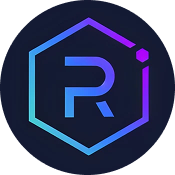In the complex world of decentralized finance, two platforms stand out for their unique approaches to maximizing user yields and scaling blockchain solutions: Yearn Finance, the pioneer of yield optimization protocols, and Polygon, the scalable sidechain aiming to revolutionize blockchain infrastructure. While Yearn automates the hunt for the best returns across multiple DeFi protocols, Polygon offers an infrastructure that enables fast, low-cost transactions for a multitude of applications. This comparison dives deep into their core architectures, features, and ideal user bases, providing crypto enthusiasts with the insights needed to choose the right platform for their investment strategies.
Short on time? Jump to Yearn Finance vs Polygon Comparison
Understanding Yearn Finance and Polygon ?
Yearn.Finance, launched in 2020 by Andre Cronje, is a decentralized platform built on Ethereum that automates yield farming by aggregating various DeFi protocols to optimize returns. Its vaults and strategies allow users to deposit assets and earn yields without manual intervention. The native token, YFI, grants governance rights and encourages community participation in platform upgrades. Yearn continually evolves through iterations like YearnV3, which aims to enhance security, decentralization, and multi-chain compatibility.
Polygon, formerly Matic Network, is a Layer 2 scaling solution designed to address Ethereum's high fees and slow transaction speeds. Its architecture comprises multiple layers, including Heimdall (proof-of-stake consensus) and Bor (block production), facilitating fast and low-cost transactions. Polygon supports a broad ecosystem of over 19,000 decentralized applications, from DeFi protocols like Aave to NFT marketplaces like OpenSea. Its native token, MATIC, is used for staking, governance, and paying transaction fees, underpinning a vibrant and growing ecosystem.
Both platforms are integral to the DeFi landscape but serve different purposes: Yearn focuses on maximizing yield through smart contract automation, while Polygon aims to improve scalability and interoperability for a wide range of blockchain applications. Understanding their technical foundations helps investors leverage each platform's strengths effectively.
Recent developments highlight their continuous innovation: Yearn's YearnV3 introduces modular architecture and decentralization features, whereas Polygon’s Protocol 2.0 and AggLayer aim to enhance scalability with zero-knowledge proofs and cross-chain communication. Their evolution reflects a shared goal of making DeFi more efficient, secure, and accessible.
Key Differences Between Yearn Finance and Polygon
Primary Functionality
- Yearn Finance: Yearn Finance is primarily a yield aggregator that automates investment strategies across multiple DeFi protocols. Its vaults and smart contracts optimize returns by continuously reallocating funds based on market conditions, making it a tool for maximizing passive income in DeFi. It focuses on individual investors seeking the highest yields with minimal effort, leveraging smart contract automation to handle complex strategies seamlessly.
- Polygon: Polygon serves as a blockchain infrastructure platform that enhances Ethereum’s scalability by providing a sidechain solution. It enables fast, low-cost transactions and supports a broad ecosystem of dApps, from DeFi projects to NFTs. Instead of focusing solely on yield optimization, Polygon’s core strength lies in providing a scalable, developer-friendly environment that can host a variety of applications, effectively acting as a base layer for blockchain interoperability.
Underlying Technology
- Yearn Finance: Yearn is built on Ethereum and utilizes smart contracts to automate yield farming. Its vaults employ strategies such as lending, staking, and liquidity provision, leveraging protocols like Aave and Compound. The platform emphasizes decentralization through governance tokens like YFI, which allow community-driven decision-making. Its architecture continues to evolve with innovations like YearnV3, which introduces modular components for security and flexibility.
- Polygon: Polygon’s architecture consists of multiple layers, including Heimdall for consensus and Bor for block production, both based on proof-of-stake mechanisms. Its zkEVM and other zero-knowledge solutions aim to further improve scalability and privacy. Polygon’s ecosystem is supported by its native token MATIC, used for staking, governance, and fee payments, underpinning a robust network designed for high throughput and low latency.
Use Cases
- Yearn Finance: Yearn is ideal for individual investors and yield farmers seeking to optimize returns without actively managing their positions. Its vaults and strategies cater to users looking for passive income streams, leveraging DeFi’s composability to generate high yields through automated processes. It also appeals to developers aiming to build new DeFi strategies within a secure and modular framework.
- Polygon: Polygon is suited for developers and enterprises requiring scalable solutions for decentralized applications. Its infrastructure supports DeFi protocols, gaming, NFTs, and enterprise integrations, making it a versatile platform for building and deploying blockchain-based solutions. The extensive ecosystem and developer tools make Polygon a go-to choice for high-performance dApps.
Tokenomics
- Yearn Finance: YFI, the native governance token of Yearn, was distributed to early users and liquidity providers, emphasizing decentralization. Token holders can participate in governance proposals, voting on platform upgrades and strategy development. Yearn’s tokenomics encourages active community participation to steer the platform’s future.
- Polygon: MATIC, Polygon’s native token, is essential for staking, transaction fee payment, and governance. Its value is supported by the ecosystem’s growth and enterprise partnerships. The token’s utility extends to powering the network’s security and facilitating cross-chain interactions, incentivizing validators and developers alike.
Security and Governance
- Yearn Finance: Yearn emphasizes security through audits, community governance, and iterative improvements like YearnV3’s modular architecture. Its governance model allows YFI holders to propose and vote on platform changes, fostering decentralization. Security incidents like past exploits have prompted ongoing enhancements to safeguard user funds.
- Polygon: Polygon employs a proof-of-stake consensus mechanism with a network of validators responsible for securing the chain. Its governance involves token staking and community votes, enabling decentralized decision-making. Polygon’s security model benefits from its layered architecture and active development community focused on protocol upgrades.
Yearn Finance vs Polygon Comparison
| Feature | ✅ Yearn Finance | ✅ Polygon |
|---|---|---|
| Primary Function | Automates yield farming across DeFi protocols to optimize returns. | Provides scalable infrastructure for decentralized applications and transactions. |
| Core Architecture | Ethereum-based smart contracts with vault and strategy systems. | Multi-layered architecture with Heimdall and Bor, utilizing proof-of-stake. |
| Main Use Cases | Passive income for yield farmers and DeFi investors. | Hosting scalable dApps, DeFi protocols, and NFTs with high throughput. |
| Token Utility | YFI governance token for community proposals and voting. | MATIC used for staking, transaction fees, and governance participation. |
| Security Model | Decentralized governance, security audits, modular upgrades. | Proof-of-stake consensus, validator network, layered security. |
| Ecosystem Size | Focused on DeFi yield strategies with a growing vault ecosystem. | Supports over 19,000 dApps including DeFi, gaming, and NFT platforms. |
Ideal For
Choose Yearn Finance: Individual investors and yield farmers seeking automated profit maximization in DeFi.
Choose Polygon: Developers and enterprises needing scalable, high-performance blockchain infrastructure.
Conclusion: Yearn Finance vs Polygon
Yearn Finance and Polygon represent two pivotal pillars in the DeFi ecosystem, each addressing distinct challenges—yield optimization and scalability. Yearn’s modular, community-driven approach to maximizing yields makes it an attractive choice for passive investors and yield farmers aiming for the highest returns with minimal effort. Meanwhile, Polygon’s scalable infrastructure empowers developers to build high-performance decentralized applications that can handle a broad spectrum of use cases, from DeFi to gaming and NFTs.
Choosing between Yearn and Polygon ultimately depends on your specific goals: if passive income through yield farming is your priority, Yearn offers a streamlined, automated platform. For those looking to develop or deploy scalable blockchain applications, Polygon provides the necessary infrastructure to accelerate growth and user adoption. Both platforms are continuously evolving, promising a future where DeFi is more accessible, secure, and interconnected. Investors and developers should consider their needs carefully and leverage the unique strengths of each platform to stay ahead in the fast-paced world of blockchain innovation.






